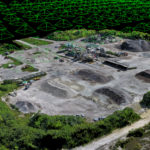What is Active Track
DJI ActiveTrack is a feature found in many DJI drones that allows them to automatically track and follow a moving subject, such as your child during a sports event. ActiveTrack uses the drone’s camera and advanced computer vision algorithms to identify and track a subject. You typically start by selecting the subject on the drone’s screen or using the remote control. Once the subject is selected, the drone will automatically follow and keep the subject in the frame as it moves. The drone adjusts its position and orientation to maintain focus on the subject, even as they move around.
What is Obstacle Avoidance
Many DJI drones with ActiveTrack also come equipped with obstacle detection sensors, which help avoid collisions while tracking the subject. This feature is especially useful in dynamic environments like sports events.
How much do drones cost
The cost of a drone can range from $50 to $50,000. The cost of a drone varies depending on their features, quality, and intended use. Additional costs may include extra batteries, propellers and even the software used to edit the photos, videos and information acquired by the drone.
How long does a battery last
Battery charge life will vary on a few conditions like wind, flight speed, photos taken and video duration. All of these things will affect the time. On average, a quality drone can be flown for about 25 to 35 minutes on a single battery.
How fast can a drone fly
Racing drones can often exceed 100 mile per hour. Using drones for photography and video will usually travel at an average of 2-15 miles per hours depending on the requirements of the project scope.
What is LiDAR
LiDAR stands for Light Detection and Ranging, and it's a remote sensing technology that uses laser pulses to measure distances and movement in real time. LiDAR systems can emit millions of laser pulses per second, and each pulse returns to the scanner, allowing it to calculate the distance between the object and the sensor using the velocity of light. The result is a single point in space, and combining all these points creates a 3D visualization called point cloud data.
When is the best time to do a thermal inspection
Thermal inspections are often done at night because cooler ambient temperatures can enhance the contrast between hot and cold surfaces. During the day, solar radiation can heat up building materials, making it harder to detect thermal anomalies like leaks or insulation deficiencies. Nighttime inspections provide a more accurate representation of the building's thermal performance, allowing for better identification of issues such as heat loss, moisture detection and insulation deficiencies.
Do thermal cameras detect temperature
Yes, thermal cameras detect heat, but more specifically, they measure infrared radiation emitted by objects. Every object emits infrared energy based on its temperature, and thermal cameras translate this energy into images called thermograms. These images display temperature variations, allowing you to see areas of heat loss, insulation deficiencies, moisture intrusion, and other thermal anomalies. So while they don't "see" heat in the traditional sense, they effectively visualize temperature differences, helping identify problems that may not be visible to the naked eye.
What is a DEM
A DEM model is a digital representation of the bare-earth terrain elevations of a landscape. It is a raster dataset—meaning it consists of a grid of squares (pixels)—where each cell contains an elevation value relative to a vertical datum (like sea level).










